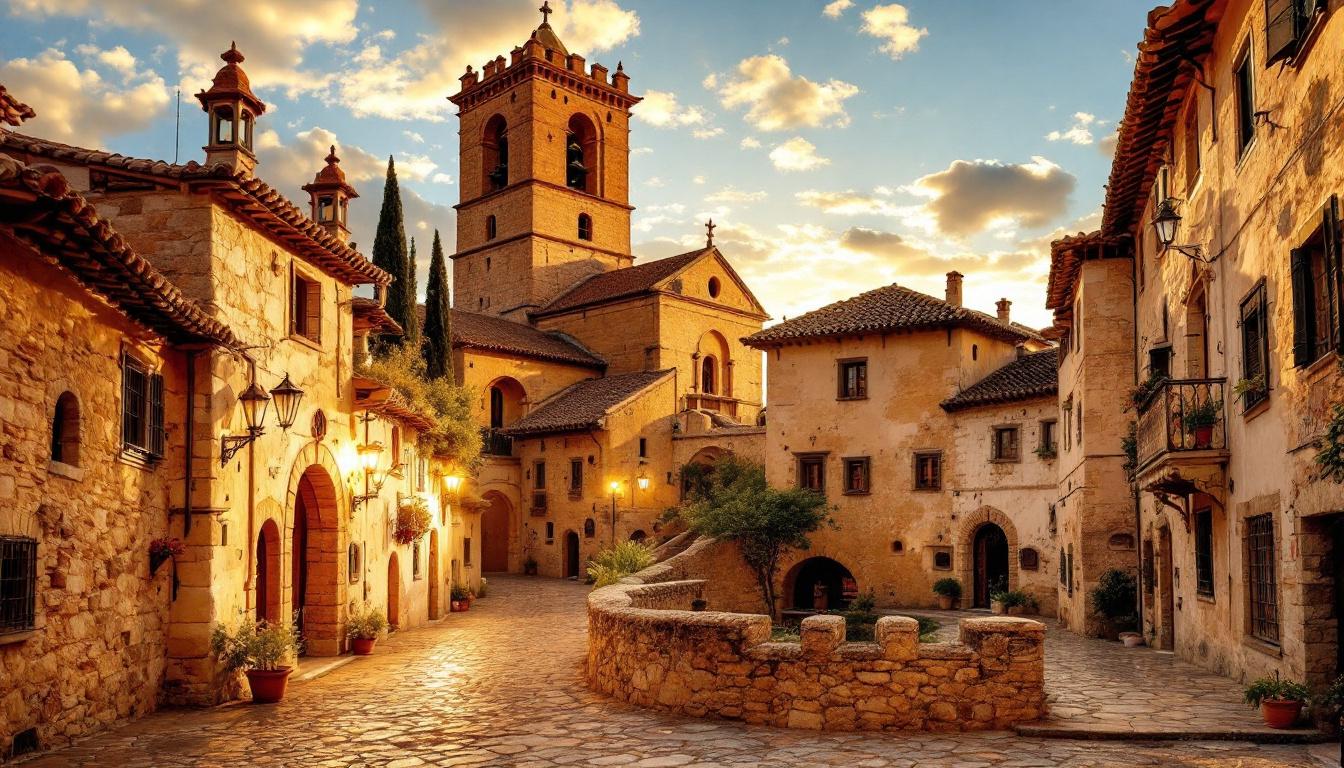This historic Spanish village of just 635 souls sits frozen in time at the gateway to Aragón. Honored among “The Most Beautiful Villages of Spain” since 2013, Rubielos de Mora offers a masterclass in preservation that few tourists discover. While Barcelona and Madrid draw millions annually, this 63-square-kilometer medieval gem delivers authentic Spanish experiences without the crowds.
A spectacular architectural timeline preserved in stone
Walking Rubielos’ narrow streets reveals a living museum of architectural styles spanning centuries. The magnificent Church of Santa María la Mayor dominates the skyline with its imposing bell tower featuring distinctive Mudejar brickwork in mesmerizing herringbone patterns.
“What makes Rubielos unique is that it wasn’t just preserved—it evolved organically through different artistic periods while maintaining its medieval soul,” explains local historian María Sánchez. “The baroque façade of Santa María la Mayor stands alongside Gothic elements and Renaissance influences.”
Two surviving medieval gates that once protected a kingdom
The town’s original defensive walls have mostly disappeared to time, but two magnificent stone archways—Puerta de Albarracín and Puerta de Teruel—remain steadfast. These 15th-century sentinels still feature their original iron-banded wooden doors, worn smooth by centuries of touch.
Unlike the reconstructed gates you’ll find in other European medieval cities, these portals have weathered wars, revolutions, and modernization attempts virtually unchanged.
The remarkable museum hiding in a 16th-century monastery
The Gonzalvo Museum, partially housed in the old Convent del Carmen, showcases extraordinary artworks by José Gonzalvo that capture the region’s essence. His intricate scale models of sculptured monuments provide a fascinating window into Aragonese artistic traditions rarely seen by international visitors.
Secret viewpoints that reveal Spain’s mountainous heartland
The Mirador de la Cruz offers breathtaking panoramas across the Teruel Plateau, especially magical at sunset when the landscape transforms into a patchwork of golden fields and terracotta rooftops. Unlike tourist-packed viewpoints elsewhere, you’ll likely have this vista entirely to yourself.
“From this spot, you can witness five centuries of agricultural practices unchanged by time,” shares José Martínez, a seventh-generation farmer. “The fields below tell Spain’s rural story better than any history book.”
Where to experience authentic Aragonese cuisine
Skip the tourist restaurants and head to El Aljibe, where Chef Carmen Rubio crafts traditional dishes using techniques passed down through generations. Her signature “Ternasco de Aragón” (roasted lamb) exemplifies regional flavors that have earned this humble eatery quiet fame among culinary pilgrims.
A seasonal calendar governed by ancient traditions
Visit during September’s Festival of the Holy Martyrs Abdón and Senén to witness celebrations little changed since medieval times. Unlike commercialized medieval festivals, these authentic traditions connect directly to the town’s agricultural heritage.
Nature’s hidden treasures surrounding the village
The mountains encircling Rubielos offer extraordinary hiking opportunities through landscapes that shift dramatically with the seasons. Spring brings carpets of wildflowers including rare orchid species, while autumn transforms the forests into a symphony of copper and gold.
Unlike remote island destinations requiring complicated journeys, Rubielos sits just 361 kilometers northeast of Madrid—a comfortable 4-hour drive through stunning countryside.
“We’ve preserved something increasingly rare in Europe—a complete ecosystem where human activity and nature exist in balance,” notes environmental guide Ana López.
Where Spanish time moves at its own pace
In Rubielos, like certain island communities, daily rhythms follow ancient patterns. The afternoon siesta remains sacred, shops close for long lunches, and evening paseos (strolls) bring the entire community together along Calle Mayor as the summer heat subsides.
